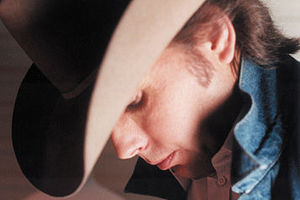As Alfred Hitchcock’s first American film, Rebecca (1940) earned him is only best picture Oscar. This adaptation of Daphne Du Maurier’s chilling suspense novel of the same title compliments the story in a variety of ways. By adjusting this story to the fit the constraints of the cinematic screen, Hitchcock remained remarkably faithful to Du Maurier’s story. Although some divergences do occur, Hitchcock’s rendition of Daphne Du Maurier’s romantic suspense novel compliments her story in classic Hitchcockian style. Since this story lends greatly to Hitchcock’s love of disturbing characters, terrifying scenery and shocking plot twists it comes as no surprise that this film was such a success. In regards to Hitchcock’s adaptation, his faithfulness to and divergence from Du Maurier’s story can be illustrated in his portrayal of the four main characters in the book. Although each character’s outstanding attributes cross over from novel to film with ease, the way Hitchcock represents most of these characters to the viewer differs dramatically from the representation presented in the novel.
The first divergence Hitchcock makes from the novel is the heroine herself. Although many of the heroine’s characteristics remain similar to the heroine in the novel, Hitchcock’s casting of Joan Fontaine in this role deviates very far from the physical appearance of the heroine Du Maurier describes. Daphne Du Maurier’s heroine is a disheveled, and overall unattractive woman, which is part of the shock that lies beneath much of the gossip surrounding the new marriage. When compared to Rebecca, onlookers had difficulty believing that Maxim would marry such an unattractive woman so soon after the death of the beautiful Rebecca. Since the novel’s heroine is frequently distressed about the fact that she could never live up to the high standards placed on her by those who knew Rebecca as well, the contrasting physical appearance between herself and Rebecca stood as a constant reminder of this fact. By casting Fontaine in this role, Hitchcock begins the film with a conflicting aspect between his work and that of the author.
The character of Rebecca offers the most intriguing example of a character within a mystery novel. Throughout the story, the heroine (who is never given a name) searches for the truth about her husband’s deceased first wife. During the majority of the story, only Rebecca’s redeeming characteristics are revealed. It is only after her dead body is found that her real personality comes into the light. Once the reader learns that the heroine’s husband, Maxim, actually killed Rebecca out of jealousy, Rebecca’s true qualities are shown, forcing the reader to reposition their sympathy from Rebecca to Maxim. Although this shift is also apparent in Alfred Hitchcock’s 1940 adaptation of the novel, he handles both of these aspects in a very different way than that of Du Maurier. The most intriguing aspect of Rebecca’s character is the fact that the entire novel surrounds her, but she is never physically present. Hitchcock takes full advantage of this fact in the scene in which Maxim describes her death. Through his beautiful camera work, Hitchcock films the invisible Rebecca during the entire description. Although the camera is, in actuality, filming ‘blank’ space, it is apparent that Hitchcock is portraying the ghost of Rebecca that looms throughout the entire story.
The strong plot twist involving the death of Rebecca marks Hitchcock’s strongest divergence from the novel. Until this point, the director has remained somewhat faithful to the plot of Du Maurier’s book. This deviation occurs during Maxim’s description of Rebecca’s death, and is the only extreme departure Hitchcock takes from Du Maurier’s story, but this deviance is so abrupt that it needs special attention. In his long description, Maxim reveals Rebecca’s true character and the deal he made with her shortly after their union. Rebecca was a wild woman, who enjoyed many vices, including drinking, smoking and casual sex with many different men. Marking the first plot twist, this description shakes the seemingly perfect character that Rebecca has encompassed throughout the majority of the story. Once this is revealed, the reader/viewer must brace themselves for the next plot twist to come. Up until this point in the story, Hitchcock remains faithful to Du Maurier’s description, but when Rebecca’s death is revealed, Hitchcock’s divergence is made clear as well. Du Maurier’s Maxim shoots Rebecca in a jealous rage after she tells him she is pregnant with her cousin, Jack Favell’s, child. The account is described in great detail, and the fact that Maxim is a murderer is blatantly obvious. Hitchcock’s Maxim describes the death of Rebecca as an accident. After telling him of her pregnancy, Rebecca falls to the floor, hits her head, and the impact, consequently, ends her life.
This large discrepancy can be accounted for from two different points of view. The way in which Hitchcock films the scene lends more closely to his version of Rebecca’s death. In this scene, the couple unites in Rebecca’s boathouse, where the death took place. As Maxim describes the incident, the camera pans across the room, ‘following’ Rebecca as if she was actually present. Because Hitchcock uses this unique aspect of filming, the way in which Rebecca dies becomes very important. If Hitchcock had chosen to film Maxim describing himself shooting Rebecca, the scene would not only have had to encompass the aftermath of the death (cleaning, carrying the body, etc.) but it would also have to portray Maxim as a murderer.
This aspect of the novel has been criticized a great deal because the reader is forced to put aside the fact that Maxim really did kill his wife, and got away with it in the end. By putting the reader in the position to applaud a murderer, and root against the law, Du Maurier asks the reader to put aside their basic beliefs that the law is supreme. By changing Rebecca’s demise from a murder to an accidental death, Hitchcock suspends this aspect of the novel and opts for an approach to Rebecca’s death that is less controversial. In Hitchcock’s adaptation, the fact that Rebecca’s senseless lifestyle results in her unintentional death remains a fact that goes unquestioned by the spectators of his film. The modification of Du Maurier’s death scene in Hitchcock’s film makes the conclusion of the story seem less contentious. When the two lovers harmoniously return to their home, their happy union seems less debatable than the lovers’ happy return in Du Maurier’s story.
Although Hitchcock’s modification seems substantial, the reasoning discussed above makes the decision understandable. Not only does Hitchcock draw more attention to Rebecca’s downfall and Maxim’s subsequent revolt, but this attention forces the spectator to focus more closely on Rebecca’s newly revealed characteristics and therefore casually overlook the fact that she is dead. Once the focus of the spectator is in place, the story moves smoothly from the exposure of Rebecca’s death, to the trial, and finally to the happy reunion of the once distraught couple. The striking differences between the characters of Maxim and the heroine throughout the majority of the story are, therefore, disposed of after the two are free to unite without the haunting presence of Rebecca surrounding them.
The only character of the novel that remains consistent throughout the film is the character of the head maid, Mrs. Danvers. This chillingly obsessive character is portrayed as a dark and sinister woman who is constantly attempting to keep Rebecca’s spirit alive within the new couple’s home, Manderley. Hitchcock, along with Judith Anderson’s brilliant acting, transfers this horrid character to the screen with great ease. Portrayed with ghostly white skin and dark hair and clothing, Anderson fully encompasses the disturbing character of Mrs. Danvers described in Du Maurier’s novel.
Mrs. Danvers came to Manderley after Rebecca and Maxim had married, and had remained there after Rebecca’s death to run the estate. When the heroine arrived at the mansion, Rebecca’s presence saturated the entire house, due to Mrs. Danvers’ role as housekeeper while Maxim was away. Because of Mrs. Danvers’ overwhelmingly sinister character, the heroine never questioned the fact that traces her new husband’s dead wife lay scattered about the house in such a relaxed manner. The heroine’s inexperienced lifestyle, therefore, left Mrs. Danvers a large opening in which she could take advantage of – persuading the heroine to casually impose herself onto the unknowing heroine.
Hitchcock takes advantage of this fact by placing a scene into his film that does not appear in the novel. In this scene, the heroine stumbles into the west wing, which had been closed off after Rebecca’s death. Upon entering Rebecca’s room, which is still fully furnished and resting as if Rebecca were to return to it, the heroine finds Mrs. Danvers roaming about the untouched space. Through a deceiving discussion, Mrs. Danvers convinces the heroine to sit at Rebecca’s dressing table, and rummage through her closet full of beautiful clothing. This is the first attempt that Mrs. Danvers makes at pushing the new Mrs. De Winter into the role of Rebecca, only to mock the fact that she could never fill Rebecca’s beautifully ornamented shoes.
The second deceitful attack on the heroine and her place within Manderley in the film (occurring in the novel as Mrs. Danvers first and only attack) takes place at the costume ball that the heroine had persuaded Maxim to revive. While deciding on a suitable costume, Mrs. Danvers convinces the heroine to make a costume similar to a large painting in the hallway. Through a disastrous entrance into the ballroom, the heroine becomes distraught and Mrs. Danvers is shown with an ominous smile plastered on her face. It is later learned that Rebecca had worn the exact same costume to the ball the year before she died. When confronting Mrs. Danvers about the ordeal, the heroine finds herself in Rebecca’s room once again, and this time Mrs. Danvers dismisses the idea of turning the heroine into Rebecca, and instead decides to rid Manderley of the new woman, so Rebecca may reign again. In a chilling whisper, Mrs. Danvers attempts to persuade the heroine to jump from the window and kill herself, ridding Maxim and Manderley of the constant turmoil she has caused. Although this idea is put out of the heroine’s mind by the discovery of Rebecca’s body, Mrs. Danvers’ most sinister moment occurs during this scene. The viewer/reader can later recognize that the relationship between Mrs. Danvers and Rebecca was more than just the closeness of a woman of society and her maid; it becomes strikingly apparent that Rebecca’s sinister characteristics have transcended upon Mrs. Danvers as well. Consequently, Rebecca lives on after her death, through the wicked actions of Mrs. Danvers. The fact that Mrs. Danvers dies within the burning mansion therefore seems fitting because both herself and the house represent the looming ghost of Rebecca and the tragedy the happy couple hopes to forget.
The destruction of Manderley and the happy union of the newly married couple marks an uncomfortable end to a tragic story. Although the fact that the couple is free to live unscathed by the torment that overtook their lives throughout the course of their marriage thus far remains at the heart of the conclusion of the story, the way the novel, as well as the film depicts this conclusion leaves a sense of tension within the observer. The fact that this union is marked by deceit and unrest outweighs the happiness portrayed by the central lovers. The happy ending is, consequently, not happy at all. The couple’s property is destroyed, and the ghost of Rebecca will obviously linger over them throughout their subsequent existence. The fact that the character of Rebecca is never present within either medium makes this conclusion all the more chilling, but this unsettling ending is also the only possible finale a story such as this could come to. The unrest within the spectator/reader at the close of this story permeates through the mood of the characters as well, and it becomes apparent that no good can come of an evil decision because that evil act will haunt you forever.



